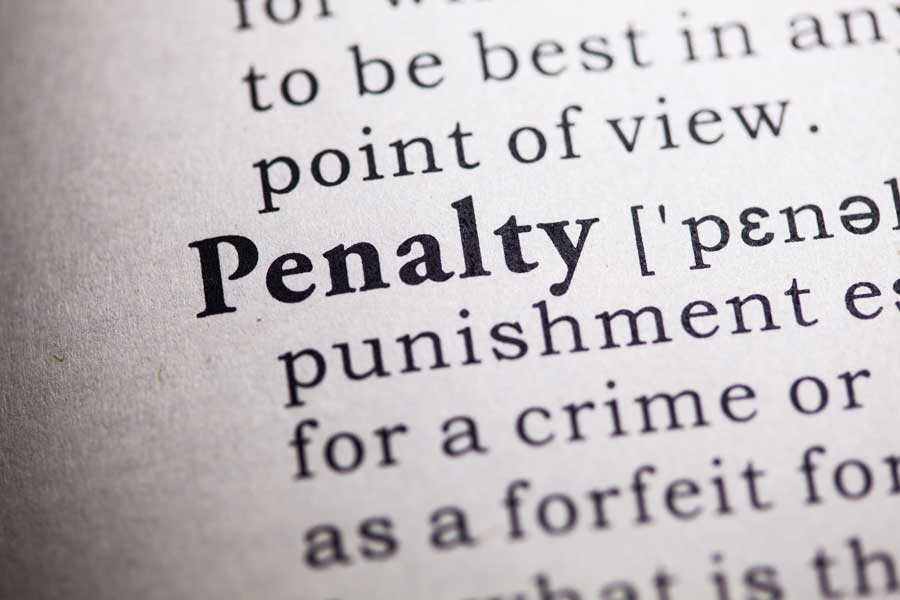Proportionality is broadly interpreted as:
Forming a relationship with other parts or quantities; being in proportion
Properly related in size, degree, or other measurable characteristics
Corresponding: punishment ought to be proportional to the crime
The historic and arguably the current penalty system applied by HMRC leaves interpretation open to whether a penalty suggested by an officer of HMRC is proportionate: this will inevitably be the case where humans have control given they may base decisions on either emotions or logic. The new regime was introduced from 1 April 2009 although, as often is the case with our tax legislation, it is under scrutiny already: a discussion document was published on 2 February 2015.
The discussion document seeks views by 11 May about potential improvements to how penalties apply for failing to pay what is owed or to meet deadlines for returns or registration. The discussion therefore applies to a wider scope of penalties than those introduced on 1 April 2009. We set out at the appendices to this article the current and historic penalty regime where there have been errors or failures to report for tax purposes.
An interesting point at the outset of the consultation is the reference to HMRC designing “a tax system for the modern, digital world” and keeping “up to date with both technology and behavioural science”. This could be a reference to the ability that HMRC has to identify errors within their systems collating information from various sources that should be included within the tax return and also the ability to apply and process penalties electronically thereby reducing the cost of imposing penalties.
In the consultation, HMRC recognise the importance of fairness and proportionality indicate that unfair or disproportionate penalties can result in continued non-compliance.
Considering proportionality in relation to income tax self-assessment, HMRC appear to indicate that there should be a different treatment between those who miss a deadline by a short period and those that make little or no attempt to file. This could give rise to a tiered or daily penalty where failure to file a return continues for a long period of time.
On referring to the VAT default surcharge, HMRC acknowledge that the method of handling non-compliance gives the customer an opportunity to recognise and put right problems in their filing process ahead of facing a large penalty. They also recognise that in some cases it has the opposite affect and some customers ignore the early warnings! It is noted that there is no difference between late payments of a short and long time.
Certain penalties take account of the behaviour of the customer and are dependent on dealings with HMRC. The penalties seek to distinguish between careless and deliberate behaviours (these are those set out at the Appendices). It is acknowledged that proportionality is still an issue and there needs to be consistency. HMRC comment with reference to digital ways of working, that they wish to ensure the system adapts to this new way of working.
The discussion documents sets out HMRC’s five principles in relation to penalties:
To encourage compliance and prevent non-compliance. It is stated that “penalties are not to be applied with the objective of raising revenues”.
Proportionate to the offence and may take into account past behaviour
Be applied fairly recognising compliant and non-compliant customers
Provide a credible threat. It is stated that HMRC must be able to raise penalties and collect it in a cost-efficient manner.
Consistent and standardised approach. Although it is stated that variations will be those necessary to take into account customer behaviours and particular taxes.
The spirit of the discussion appears to welcome the opportunity to give normally compliant customers some leniency with penalties whilst being much more aggressive with those who continually fail to comply. Likewise, it is proposed that new entrants to the tax regime will also be given leniency. However, the underlying proposition appears to suggest considering a customer’s compliance obligations collectively, for example an individual who is also a shareholder of a company may be subject to a more stringent penalty if his personal tax affairs and his company’s tax affairs are non-compliant.
The points of discussion include:
Using non-financial sanctions as an alternative to financial penalties.
Reduce/remove the risk of our most vulnerable customers receiving penalties, while still helping them to meet any tax obligations.
Moving to a progressive penalty system similar whereby penalty points are incurred although initial financial penalties are avoided. More substantial penalties would apply for more serious failures or for persistent non-compliance with obligations.
Whether a personalised digital tax account is appropriate showing all the taxes in one place and move towards a penalty system that is based on the overall position.
Conclusions
The proposals on first reading appear to take into account fairness and proportionality. However, a little further thought as ever produces some concerns:
Would there be an appeal process against either penalty points or financial penalties? It is envisaged that a customer may not ask their adviser to appeal a penalty point as it has no financial measure although if they subsequently incur a financial penalty, they may wish to review whether penalty points should have been levied.
Will serious failures and persistent non-compliance be qualified? Currently a HMRC officer alleges whether something is serious in line with HMRC guidance although in practice there is scope for interpretation.
If a system considering the overall position is introduced, what would be the appeal system? It is envisaged that a client with multiple business interests may suffer a number of penalties where there is non-compliance. There could be a reasonable explanation for businesses facing issues compliance issues. What if the client however is meticulous on their personal tax compliance? Is it then fair to be subject to a higher penalty?
The proposals appear reasonable although in practice clearer parameters need to be set out to alleviate subjective penalties and a clear appeal process needs to be implemented for any point or penalty system. The appeal process could be incorporated into an automated system thereby alleviating both professional and HMRC costs.
Appendix One
The new penalty regime was introduced from 1 April 2009. For tax irregularities spanning a long period, there are two penalty regimes that need to be considered.
S97 Finance Act 2007 set out the provisions for penalties for errors:
Schedule 24 contains provisions imposing penalties on taxpayers who—
make errors in certain documents sent to HMRC, or
unreasonably fail to report errors in assessments by HMRC.
Schedule 24 sets out the penalties as follows:
| Penalty | ||||
| Careless action | Deliberate but not concealed | Deliberate and concealed | ||
| Category One |
| 30% | 70% | 100% |
| Category Two |
| 45% | 105% | 150% |
| Category Three |
| 60% | 140% | 200% |
A reduction of penalties is achievable from the the standard penalty by disclosure. The disclosure of an inaccuracy is defined in Schedule 24 as:
Telling HMRC about it
Giving HMRC reasonable help in qualifying the inaccuracy or under assessment
Allowing HMRC access to records for the purpose of ensuring that the inaccuracy or the under assessment is fully corrected
A higher discount is available if the disclosure unprompted. The potential discounts are set out in Schedule 24. The standard percentage may not be reduced to a percentage that is below the minimum shown for it as set out in the following table:
| Standard % | Minimum % for prompted disclosure | Minimum % for unprompted disclosure |
| 30 | 15 | 0 |
| 45 | 22.5 | 0 |
| 60 | 30 | 0 |
| 70 | 35 | 20 |
| 100 | 50 | 30 |
| 105 | 52.5 | 30 |
| 140 | 70 | 40 |
| 150 | 75 | 45 |
| 200 | 100 | 60 |
For periods prior to 2009, the penalty started at 100% and was mitigated as follows:
Up to 20% for disclosure or 30% if the disclosure was voluntary
Up to 40% for co-operation
Up to 40% subject to the nature of the tax offence
Advisers acting in respect of enquiries, investigations and the Contractual Disclosure Facility (CDF) need to be familiar with the penalty regimes. Where there are multiple irregularities, it may be appropriate to consider each in isolation when negotiating penalties.
It is recommended that an adviser set out in writing to clients under enquiry the penalty regime and importantly how those penalties can be mitigated. It is also suggested that the adviser keep an isolated note on actions throughout the enquiry or disclosure that could have a direct impact on penalty negotiations given it may particularly difficult to go back over history contained within the files.
[cs_gb id=1263]



